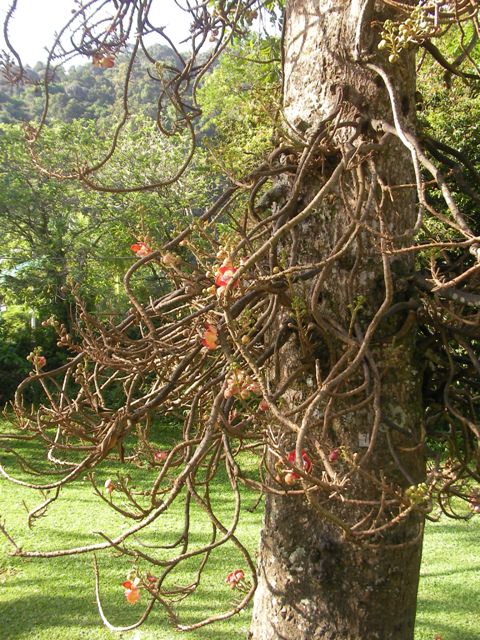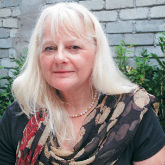Penang’s cherished Botanic Gardens are enjoying a shake-up thanks to the British expert flown over to lend a helping hand to this flourishing green space. Frances Wilks meets the man hoping to further improve this wonderful public facility.
The Botanic Gardens are one of the oldest attractions of Penang, but they do go by various names. Sometimes they are known as the Waterfall Gardens because they are set in an amphitheatre of hills under the cascades of the great waterfall of Penang.When I was a child, however, they were often called the Monkey Gardens, a name you don’t hear nowadays. In those days, you could drive through the Gardens in your car, a bit like a safari park, while the monkeys jumped onto the bonnet, messed around with the wing mirrors, and frequently snapped the elastic of a windscreen wiper just for their own amusement. It’s completely different now: cars are not allowed and walkers and joggers enjoy the cool tranquillity of the great trees and well-kept lawns.
Helping Hand
Despite the improvements already made to the Gardens, there is still work to be done to raise the Botanic Gardens to truly international status, which is one of the reasons why Stewart Henchie has come over from Britain to spend a year in Penang. Formerly Assistant Curator at the Royal Botanic Gardens at Kew (UK), Stewart is passionate about the necessity for documenting the collection and making sure that all the specimens are labelled correctly. Even more important, in his view, is the need to train staff and give them confi dence in their decision-making and management skills. “They’re pretty good at their jobs,” Stewart commends, “but they need to know that they are, which is what I hope I can show them over the next few months.”
As we walk around the gardens, Stewart tells me that there had been several botanic gardens in Penang before this one. “In a way, they were an offshoot of colonialism,” he explains. “They were established in quite a few places to collect useful plants and seeds which could be commercially exploited.The seeds were taken to Kew and propagated. Often the results were sent to other botanic gardens, which is why you’ve got trees from West Africa and India growing here.”The Gardens was also a nursery for many of the heritage trees that now line Penang’s roads.
Old and New
The current garden was established in the late 19th century by Charles Curtis, who found it to be a wonderful place to grow plants from all over the world. It’s similar to the Singapore Botanic Gardens, with which it has always had strong links, but the Penang Botanic Gardens boasts an even better climate because of the hills and the high rainfall. Curtis laid out the walks and designed the planting of the trees, and it flourished until the time of the Second World War.
During the Japanese occupation, one of the Superintendents of the Gardens perished on the Burma-Siam Railway, and torpedoes were assembled in the area where the orchid house now stands.Though most of the wartime clutter had been cleared by the 1950s, many of the important dried herbarium specimens were transferred to Singapore, and the gardens became more of a public park than a true botanical garden.
But things have been changing for the better. A new administrative office is about to open which will allow the old building to be turned into a herbarium for scientifi c study. Stewart explains the importance of establishing a type specimen collection so that each plant can be measured against the purest form of the type.There will also be a poetically-named “spirit collection” of orchids and other plants; since orchids cannot be dried, they have to be preserved in alcohol.
Penang Life

Stewart is here in Penang with his wife, and they are both enjoying their time. “It’s a bit like doing VSO (Voluntary Service Overseas),” he comments, “but when you’re retired.The climate’s great and the lifestyle very relaxing. I like the way you don’t have to go out for a meal like you would in Britain.You can just pop out to eat.”The couple have worked their way through many of the hawker stalls in their neighbourhood, and they love the vibrant multi-cultural life of the island.
Stewart’s advice to potential visitors of the Gardens is to visit often, as things change, and look around to see what’s in fl ower. During my visit, he points out the dramatic orange red flowers of the Cannonball Tree (Couroupita guianensis), so called because when the tree’s large seeds drop, they make a sound a bit like cannon fire. He shows me the blooms of a gorgeous Rhodesian Teak tree (Baikiaea insignis) – white frilly petals surrounding a yellow centre, rather like a delicately fried egg.
He has one final piece of advice for visitors – please don’t feed the monkeys. “We’ll always have monkeys in the gardens but there are too many and they can be aggressive,” he warns. “Some of them would return to their natural habitat if they weren’t fed.” It’s just as well, then, that the Monkey Gardens have faded forever in the public’s mind to be replaced by an increasingly beautiful and well-maintained botanic gardens.
———————————————————————————————————
The Penang Botanic Gardens is open every day from 5am to 9 pm and entry is free. The Friends of the Botanic Gardens hold regular walks and guided tours, and the gardens will be the venue for the World Music Festival in Penang 30-31 March.
The Gardens Shop is open daily and refreshments are available within.The park can also rent ornamental plants and arrange group tours.Visit www. botanicalgardens.penang.gov.my for more details.
———————————————————————————————————
Source: Penang International April 2013 – May 2013
What are your thoughts on this article? Let us know by commenting below.No registration needed.
"ExpatGo welcomes and encourages comments, input, and divergent opinions. However, we kindly request that you use suitable language in your comments, and refrain from any sort of personal attack, hate speech, or disparaging rhetoric. Comments not in line with this are subject to removal from the site. "




















